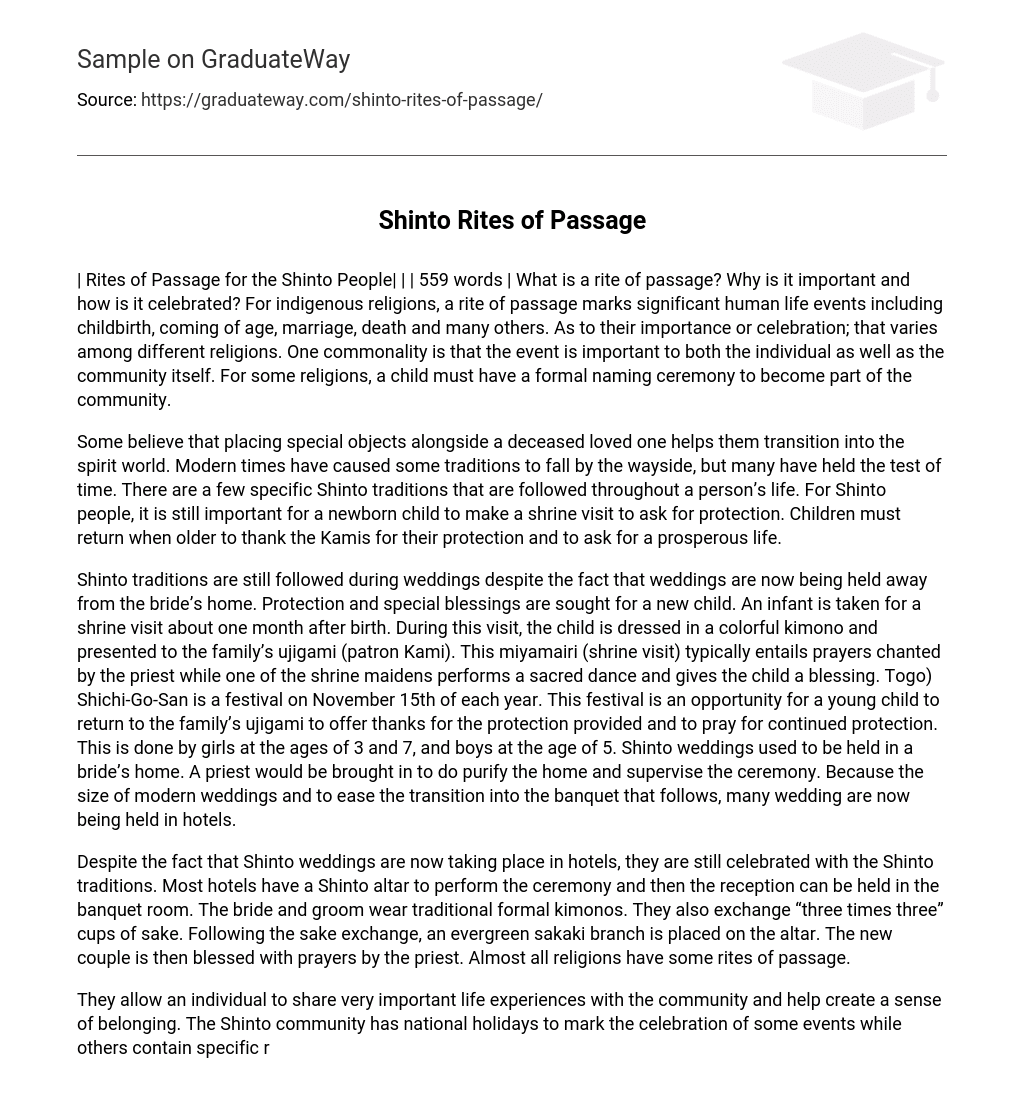For indigenous religions, a rite of passage marks significant human life events including childbirth, coming of age, marriage, death and many others. As to their importance or celebration; that varies among different religions. One commonality is that the event is important to both the individual as well as the community itself. For some religions, a child must have a formal naming ceremony to become part of the community.
Some believe that placing special objects alongside a deceased loved one helps them transition into the spirit world. Modern times have caused some traditions to fall by the wayside, but many have held the test of time. There are a few specific Shinto traditions that are followed throughout a person’s life. For Shinto people, it is still important for a newborn child to make a shrine visit to ask for protection. Children must return when older to thank the Kamis for their protection and to ask for a prosperous life.
Shinto traditions are still followed during weddings despite the fact that weddings are now being held away from the bride’s home. Protection and special blessings are sought for a new child. An infant is taken for a shrine visit about one month after birth. During this visit, the child is dressed in a colorful kimono and presented to the family’s ujigami (patron Kami). This miyamairi (shrine visit) typically entails prayers chanted by the priest while one of the shrine maidens performs a sacred dance and gives the child a blessing. Togo) Shichi-Go-San is a festival on November 15th of each year. This festival is an opportunity for a young child to return to the family’s ujigami to offer thanks for the protection provided and to pray for continued protection. This is done by girls at the ages of 3 and 7, and boys at the age of 5. Shinto weddings used to be held in a bride’s home. A priest would be brought in to do purify the home and supervise the ceremony. Because the size of modern weddings and to ease the transition into the banquet that follows, many wedding are now being held in hotels.
Despite the fact that Shinto weddings are now taking place in hotels, they are still celebrated with the Shinto traditions. Most hotels have a Shinto altar to perform the ceremony and then the reception can be held in the banquet room. The bride and groom wear traditional formal kimonos. They also exchange “three times three” cups of sake. Following the sake exchange, an evergreen sakaki branch is placed on the altar. The new couple is then blessed with prayers by the priest. Almost all religions have some rites of passage.
They allow an individual to share very important life experiences with the community and help create a sense of belonging. The Shinto community has national holidays to mark the celebration of some events while others contain specific rituals to be followed in order to please the Kamis. These days mark very special times in life of the individual and for the religious community.





